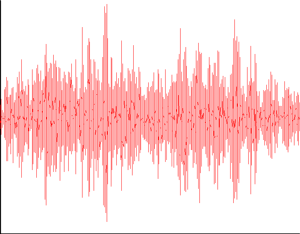Interconnecting of ship radars of centimeter and millimeter wavelength ranges
DOI:
https://doi.org/10.3103/S0735272719100042Keywords:
radar detection of objects, interference from sea surface, centimeter waves, millimeter waves, reflection from sea, statistical characteristics, signal processingAbstract
Complex application of radar information of the systems of different ranges allows to increase the efficiency of radar detection of the objects on a background of interferences from sea surface. Reflection characteristics of a sea in centimeter and millimeter wavelength range and restrictions related to their correlation property are the objects of researches and description in this paper. In this paper there are represented the results of experimental research of statistic characteristics (spectrums, distribution laws) of sea reflections including the case of their mutual processing as marks and outputs of narrowband Doppler filters. There are obtained the relations for estimation of working characteristics of the system complex in case of multiplexing and additive method of information aggregation. It is carried out comparison of the results with machinery experiment using real records of sea reflections. The basis is full-scale experiment together with mathematic modeling. It is shown that sea reflections correlation in centimeter and millimeter wavelength ranges is a factor restricting the efficiency of interconnecting of these ranges systems.References
- G. M. Vishin, Multi-Frequency Radiolocation [in Russian]. Moscow: Izd. Min. Oborony SSSR, 1973.
- Grasso, G.; Guargualini, R. “Detection characteristics of multi-frequency radar systems,” Zarubezhnaya Radioelektronika, No. 8, p.45, 1968.
- Bakut, P. A.; Bolshakov, I.A.; Gerasimov, B.P.; et al. Questions of Statistical Radar Theory [in Russian]. Moscow: Sov. Radio, 1963.
- Kravchenko, V. F.; Lutsenko, V. I.; Lutsenko, I. V. Radio Waves Dissipation by Sea and Object Detection of at This Background [in Russian] (Fizmatlit, Moscow, 2015).
- El Mashade, M. B. “Heterogeneous performance evaluation of sophisticated versions of CFAR detection schemes,” Radioelectron. Commun. Syst., v.59, No. 12, p.536, 2016. DOI: https://doi.org/10.3103/S0735272716120025.
- Elmashade, M. B. “Heterogeneous performance analysis of the new model of CFAR detectors for partially-correlated χ2-targets,” J. Syst. Engineering Electronics, v.29, No. 1, p.1, Feb. 2018. DOI: https://doi.org/10.21629/jsee.2018.01.01.
- El Mashade, M. B. “Multitarget analysis of CFAR detection of partially-correlated χ2 targets,” Radioelectron. Commun. Syst., v.59, No. 1, p.1, 2016. DOI: https://doi.org/10.3103/S0735272716010015.
- El Mashade, M. B. “Performance of novel versions of CFAR detection schemes processing M-correlated sweeps in presence of interferers,” Radioelectron. Commun. Syst., v.62, No. 4, p.143, 2019. DOI: https://doi.org/10.3103/S0735272719040010.
- Bouchelaghem, H. E.; Hamadouche, M.; Soltani, F.; Baddari, K. “Distributed clutter-map constant false alarm rate detection using fuzzy fusion rules,” Radioelectron. Commun. Syst., v.62, No. 1, p.1, 2019. DOI: https://doi.org/10.3103/S0735272719010011.
- Bouchelaghem, H. E.; Hamadouche, M. “Performance analysis of a new CFAR detector for heterogeneous environments,” Digital Signal Processing, v.9, No. 2, p.35, 2017. URI: http://www.ciitresearch.org/dl/index.php/dsp/article/view/DSP022017004.
- Piza, D. M.; Moroz, G. V. “Methods of forming classified training sample for adaptation of weight coefficient of automatic interference compensator,” Radioelectron. Commun. Syst., v.61, No. 1, p.32, 2018. DOI: https://doi.org/10.3103/S0735272718010041.
- Lekhovytskiy, D. I. “To the theory of adaptive signal processing in systems with centrally symmetric receive channels,” EURASIP J. Advances Signal Process., v.33, p.1, 2016. DOI: https://doi.org/10.1186/s13634-016-0329-z.
- Levin, B. R. Theoretic Principles of Statistic Radio Engineering, Vol. 1 [in Russian]. Moscow: Sov. Radio, 1974.
- Kravchenko, V. F.; Lutsenko, V. I.; Masalov, S. A.; Pustovoit, V. I. “Analysis of nonstationary signals and fields with the use of enclosed semi-Markov processes,” Doklady Physics, v.58, No. 11, p.465, 2013. DOI: https://doi.org/10.1134/S1028335813110074.

Downloads
Published
2019-10-29
Issue
Section
Research Articles

